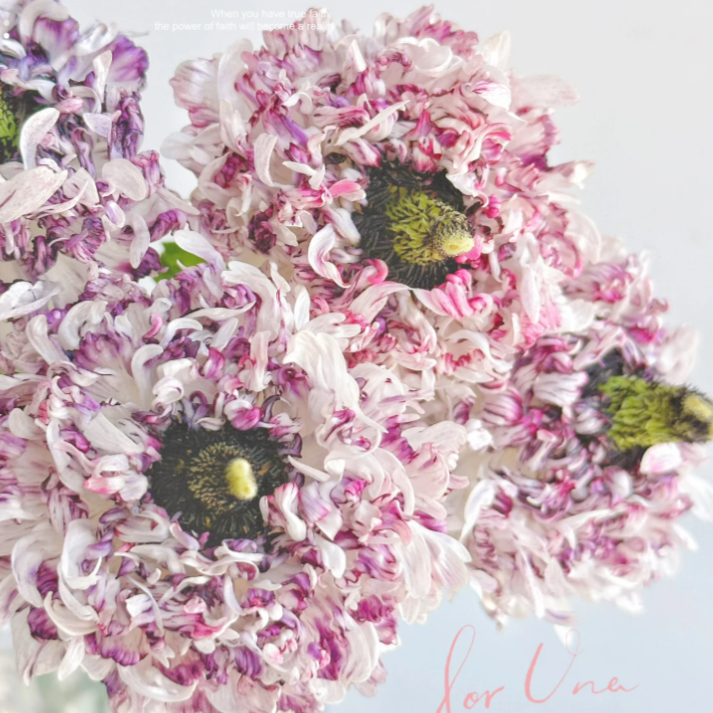









Ranunculus Brushmark Seti
Regular price $16.99 Sale price $8.99 Save $8.00/

🎁💐Don't forget to get some for your family and friends as it's a unique gift idea.
✅ Guaranteed! GoogleTrusted Store!🛒Pay
🛒 Payments Via PayPal® and CreditCard
🛒 Payments Via PayPal® and CreditCard
🚢 Shipping>>Worldwide Express Shipping is available Available.
👍Facebook officially recommends high-quality merchants.
💵The merchant deposit of USD 100,000 has been paid to PayPal. has been paid to PayPal.

💵The merchant deposit of USD 100,000 has been paid to PayPal. has been paid to PayPal.

A new addition to the already extensive assortment of Monarch Flowers, Ranunculus Brushmark Seti is a truly magnificent Ranunculus. With beautiful ruffled flowers. These flowers are light to dark purple colored. The petals of Brushmark Seti begin with a really light color, but they get more and more purple towards the edges of the petals. Which makes for a unique color combination.

Flowering time: January – April (depends on location)
Crop time: 8 – 12 weeks growing, 10 weeks flowering (depends on location)
Crop temperature: cold cultivation, free from frost
Plants per m²: 16 (4 rows per bed)
Cutting stage: flower open and shows color
Able to force: yes
Topping: no
Winter hardy: no

HOW TO GROW🌱
- Depending on where you live and what kind of setup you’re working with, you can plant your ranunculus corms in either autumn or late winter/early spring, in a place where they’ll get full sun. In areas with mild winter temperatures (USDA zone 7 and above), corms can be planted in the autumn and successfully overwintered outdoors with protection from a low tunnel or frost cloth. In colder areas (USDA zone 6b and below), ranunculus must be grown in a minimally heated hoop house or held back and planted out at the end of winter/early spring. If corms are exposed to temperatures below 25°F (-4°C), they will freeze and ultimately rot once thawed. So be sure to protect them from extreme cold temperatures.
- When you unpack your corms, you’ll notice they resemble little brown octopuses and are probably not what you were expecting. Don’t worry—these strange little critters will actually produce an abundance of striking blooms come spring.
- Before planting, soak corms for 3 to 4 hours in room temperature water. It’s important that you don’t oversoak them; otherwise they will rot. As the corms soak, they will plump up, often doubling in size. After soaking, corms can either be planted directly into the ground or presprouted. Presprouting the corms before planting will mean flowers bloom a few weeks earlier.
- To presprout, fill a flat-bottom seed tray half full of moist potting soil. Sprinkle the soaked corms onto the soil, and cover them with more soil so that they are completely covered. Leave this tray in a cool place (40°F-50°F / 4°C-10°C) for 10 to 14 days in an area where rodents can’t find it. Check on the corms every few days, making sure the soil is moist but not soggy, and remove any corms that show signs of mold or rot.
- During this time, corms will swell to about twice their original size and develop little white rootlets that resemble hair. Once rootlets appear, it’s time to plant them in the ground. Before planting, it’s important to prepare the growing beds. We add a generous dose of compost (2-3 in / 5-7.6 cm) and a balanced organic fertilizer (such as Nature’s Intent 7-2-4) and mix it thoroughly into the soil. Ranunculus corms are planted 9 in (23 cm) apart at a depth of 2-3 in (5-7.6 cm), with 4 rows per bed. Plant corms with the “octopus tentacles” pointing down.
- During cold stretches, when temps dip below freezing, cover the plants with a layer of frost cloth. Autumn-planted corms bloom in early spring, and late winter/early spring-planted corms will flower by mid-spring.
- We always get lots of questions about how to store ranunculus corms until it’s time to plant them, and about whether they can be left in the ground to rebloom the following year. Corms can be stored in the bags they arrive in; keep them in a cool, dry place until it’s time to plant. In colder climates, grow ranunculus just like annuals and plant new corms each season. If you’re a gardener in USDA zone 7 or above, you can leave your corms in the ground and they may bloom the following year depending on multiple factors, such as how cold your winter is, how well your soil drains, and how much pest pressure you have in your garden. I never count on over-wintered corms and plant new ones every year. If the over-wintered ones return, I always count it as a bonus.
- Ranunculus have an outstanding vase life, often exceeding 10 days. Cut when buds are colored and squishy like a marshmallow, but not yet fully open, for a vase life of 10 to 12 days. If the blooms are open when cut, they’ll still last a week but will be more fragile to transport. Be sure to cut spent flowers down to the base to promote new blooms.

PayPal is welcomed here.
If you want to checkout with Credit Card. Please Click Paypal and Search for ‘Pay with Debit or Credit Card'


